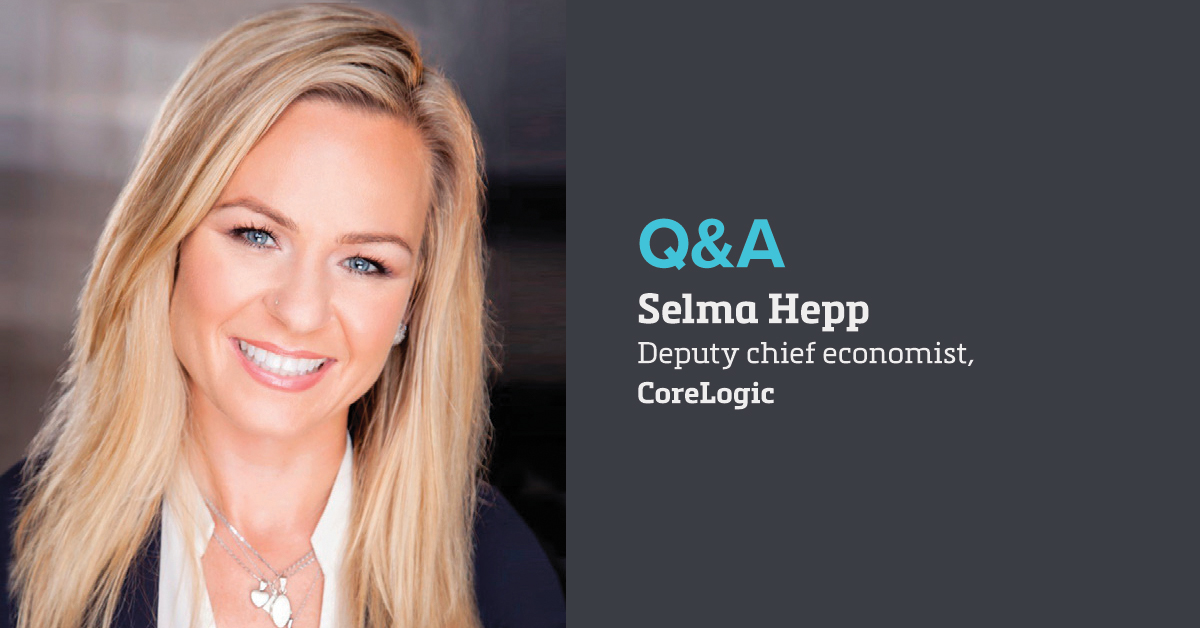Layoffs. Record unemployment claims. Bankruptcies. The bad news kept coming this past spring. Even as states reopened after the coronavirus quarantine, there were signs of the public being cautious and sales at restaurants, retail stores and other businesses being sluggish.
Although things appeared dire in many economic sectors, the reasons why economists were so optimistic about the housing market never went away. There are still millions of millennials and members of Generation Z arriving at the ages when people tend to buy homes, said Selma Hepp, CoreLogic’s deputy chief economist.
Many of these people have jobs, such as those in the tech industry, that have been relatively unaffected by the pandemic. And there are still too few homes to meet this burgeoning demand, Hepp said.
“We have undersupplied our housing so much since the Great Recession,” Hepp said. “I think that’s what’s propping up the market and will continue to prop up the market. In terms of the housing market, I don’t think it’s going to be disappointing. I think it’s going to be relatively steady.”
In a conversation with Scotsman Guide, Hepp shared her views about what’s good and bad in the economy. She also discussed her thoughts about refinances, forbearances and credit availability.
Economic realities, including job losses, are going to hamper the housing market, right?
The unemployment situation is not looking good yet. While the new unemployment claims are slowing, it’s still a significant number of claims each week. I think that part is discouraging a lot of economists.
What do you expect with the recovery? Will it be a V-shaped one?
We all wish for a V-shaped recovery. That would be an ideal scenario. I don’t know that that’s necessarily going to be the case. For example, looking at today, there was an announcement of Boeing laying off [thousands of people, mainly in Washington state]. That’s significant.
I think the recovery is going to be different from area to area depending on the industries affected. Overall, with the economy nationally, I’m a bit skeptical of the V-shaped recovery simply because of what we’re seeing in terms of unemployment claims continuing to be so high.
What do you see happening long term with home prices?
I think, through next year, we will see a flattening of price growth on a year-over-year basis. It’s going to stay the same. Again, the caveat is that, in some areas, there is probably going to be negative growth.
Are stricter lending standards preventing people from capitalizing on low interest rates?
It did from when the pandemic was declared to maybe the end of April [2020]. Lenders were not prepared and they were actually concerned with how forbearance would be handled. We’re seeing the credit box opening up in recent weeks. There will be the opportunity in the next month or so for people to take advantage of that.
How do you see forbearances factoring into the equation over the next year?
We are expecting more foreclosures as a result of the forbearances. When people have to start paying their mortgages again, that’s where the rubber hits the road. We’ll see how it plays out, but we do forecast more foreclosures over the next couple of years.
Will the refinance boom run out of steam?
Not through the end of this year. We still do expect this year to be the highest refinance year since 2013, because when you compare mortgage rates, they are at the lowest they’ve been since then. I think that’s a great opportunity for people who can take advantage of it.
Any final thoughts?
In recent weeks, just seeing the rebound in housing activities is kind of encouraging. The housing market may be the part of the economy that kind of pulls everything out again, as was the case in maybe every recession prior to the Great Recession. •






